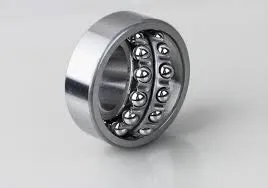
Nov . 27, 2024 23:57 Back to list
Understanding Deep Groove Ball Bearing Numbers and Their Significance in Engineering Applications
Understanding Deep Groove Ball Bearings A Comprehensive Overview
Deep groove ball bearings are one of the most commonly used types of rolling bearings in various mechanical applications. Their versatility, reliability, and ability to accommodate both radial and axial loads make them a preferred choice across multiple industries. This article delves into the intricacies of deep groove ball bearings, focusing on their design, applications, and benefits.
Design and Structure
Deep groove ball bearings are characterized by their simple design, consisting of an inner race, an outer race, balls, and a cage that holds the balls in place. The races have a deep groove that allows for greater load capacity and shock absorption. This design aids in reducing friction between the rolling elements and the races, thus enhancing the overall performance of the bearing.
One of the key features of deep groove ball bearings is their ability to handle both radial and axial loads. This dual functionality makes them unique compared to other bearing types, which may specialize in only one type of load. The grooves in the races are designed at a specific angle, optimizing the contact area with the balls to ensure smooth rotation and minimal wear.
Types and Variants
Deep groove ball bearings come in various types and variants to cater to different operational needs. Standard deep groove bearings, also known as single-row ball bearings, comprise a single row of balls and are suitable for a wide range of general applications. However, depending on the specific requirements, manufacturers offer options such as
1. Shielded Bearings These feature a cover on one or both sides to protect the internal components from dust, dirt, and moisture, which enhances longevity and performance.
2. Sealed Bearings Similar to shielded bearings but designed with seals that provide a tighter fit, thereby offering better protection against contaminants.
3. Rubber Sealed Bearings These provide flexibility and better sealing capabilities, making them suitable for applications that operate in dirty or wet environments.
4. Stainless Steel Bearings Ideal for corrosive environments, these bearings are manufactured from stainless steel, which prevents rust and increases durability.
deep groove ball bearing number

Applications
The applications of deep groove ball bearings are extensive, spanning across various sectors including automotive, aerospace, industrial machinery, and consumer electronics
. Examples of specific uses include- Electric Motors Deep groove ball bearings are integral in the smooth operation of electric motors, providing resistance against vibrations and operating efficiently at high speeds.
- Gearboxes In gear systems, these bearings minimize friction, enhancing the overall efficiency of the machinery.
- Pumps and Compressors The ability of deep groove ball bearings to handle both radial and axial loads makes them crucial in mechanical pumping and compression applications.
- Bicycles and Automotive Wheels They facilitate smooth rolling actions in bicycles and automobile wheels, enhancing performance and safety.
Advantages
The benefits of deep groove ball bearings are numerous. Their straightforward design results in ease of installation, maintenance, and replacement. Furthermore, their ability to handle high speeds and varying load conditions ensures that they perform reliably in diverse operational environments.
Additionally, deep groove ball bearings are economically viable, as they tend to have a longer lifespan, which translates to lower maintenance costs over time. Importantly, the availability of different variants allows manufacturers to select specific bearings that meet their operational needs, contributing to greater efficiency and productivity.
Conclusion
In conclusion, deep groove ball bearings are an essential component in various mechanical systems, known for their reliability, versatility, and efficiency. Understanding their design, types, applications, and advantages can significantly influence the selection process for anyone involved in engineering, manufacturing, or maintenance of machinery. As industries continue to evolve, the demand for high-performance bearings will only grow, solidifying the importance of deep groove ball bearings in modern engineering solutions.
Latest news
-
Premium Deep Groove Ball Bearings | High Speed & Reliability
NewsAug.29,2025
-
Durable Scaffolding Clamps - Secure & Reliable Tube Connectors
NewsAug.28,2025
-
Common Failures in Thrust Ball Bearings and Solutions
NewsAug.22,2025
-
How Tapered Roller Bearings Can Take Shock Loads
NewsAug.22,2025
-
Angular Bearings in High-Precision Spindles
NewsAug.22,2025
-
The Impact of Misalignment on Cylindrical Roller Bearing Performance
NewsAug.22,2025
